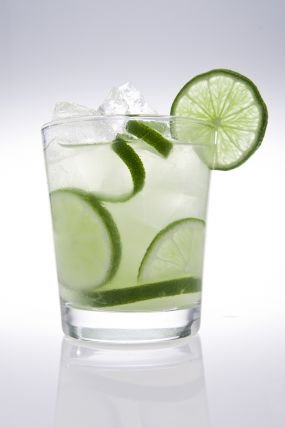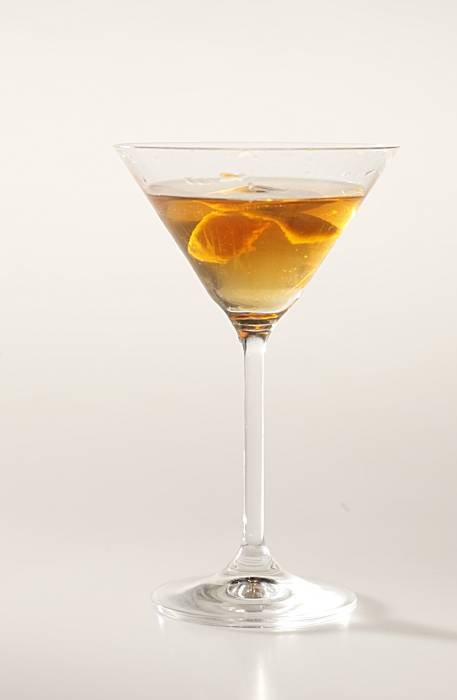…cocktail snobs versus geeks, micro and macro trends in cocktails, what drinks win cocktail contests, why I'm not sick of speakeasies, and much, much more.
Read this interview with me on Mix Pour Sip.
…cocktail snobs versus geeks, micro and macro trends in cocktails, what drinks win cocktail contests, why I'm not sick of speakeasies, and much, much more.
Read this interview with me on Mix Pour Sip.
Here's the Easter Ice project from a couple years ago that I'm reposting. Go here to learn how to make it.
 I've been writing for Fine Cooking magazine's website for several months now, and realized they don't have a recipe for the Caipirinha online. Shameful. So in my latest post I wrote about the drink, the base spirit cachaca, and some variations. Check it out.
I've been writing for Fine Cooking magazine's website for several months now, and realized they don't have a recipe for the Caipirinha online. Shameful. So in my latest post I wrote about the drink, the base spirit cachaca, and some variations. Check it out.
Sherry and tequila are showing up together on more and more cocktail menus. I wrote a story about that in the Sunday, February 20th San Francisco Chronicle.

(Del Rio cocktail by Josh Harris of the Bon Vivants. Photo: Craig Lee)
More drinks including Tequila and Sherry
Camper English, Special to The ChronicleSherry and Tequila are having a love affair. Bartenders are using more of each ingredient lately, but increasingly you'll see the two sneaking off in a drink together, canoodling in a corner of the cocktail menu.
One of the first outward signs of this attraction came in the form of La Perla, a drink created several years ago by beverage consultant Jacques Bezuidenhout, which is still on the menu at Bourbon & Branch. The cocktail contains reposado (lightly aged) Tequila, manzanilla Sherry and pear liqueur.
A not-too dissimilar flavor combination has popped up recently. At the Hideout at Dalva, a tiny backroom cocktail bar in the Mission District, Josh Harris serves the Del Rio. The drink is made with blanco, or unaged, Tequila, fino Sherry, St. Germain elderflower liqueur, plus a dash of orange bitters and a grapefruit zest.
At Gitane, the Sherry-centric Claude Lane restaurant, bar manager Alex Smith and two other bartenders collaborated on a drink called the Flor Delice, made with reposado, manzanilla, St. Germain and orange bitters, plus maraschino liqueur.
In New York, this combination shows up yet again on the menu at Mayahuel, a bar dedicated to Tequila and mezcal. The Suro-Mago uses blanco, manzanilla, elderflower and orange bitters, and adds a rinse of mezcal to give it a smoky touch.
Read the rest of the story and get the recipe for the Del Rio, a simple and delicious drink.
**Update: This story is no longer on the LA Times Magazine website, so I have pasted it here.
In yesterday's LA Times Magazine I have a huge feature on sherry.
As a wine category, sherry has practically everything going for it: a tremendous range of flavors, a rich history dating at least as far back as the Romans, the ability to pair magnificently well with food and an increasingly hip status as a cocktail ingredient used by top bartenders.
Most people, when they think of sherry at all, consider it an ingredient their grandmothers cooked with rather than something ripe for sipping on its own. Sherry is about due for a comeback, but it’s so unfamiliar to us now that it really needs a thorough reintroduction.
The story features eight drink recipes from the lofty likes of Murray Stenson, Andrew Bohrer, Alex Day, Zahra Bates, Kenta Goto and Audrey Saunders, Brian Miller, Neyah White, and Kevin Deidrich.
Go read the story, and then go make the drinks!
The word 'Martini' has very little meaning.
Two versions of the cocktail may have completely different ingredients and be served in different formats: A bone-dry-and-dirty Grey Goose Martini on the rocks with extra olives has nothing in common with a Fifty-Fifty gin Martini with orange bitters and a twist. They're not even close to the same drink – in ingredients, in format, or in purpose.
More than that, the Martini no longer exists even as a drink concept. It means different things to different people: strength, dryness, elegance, simplicity, an aperitif, glassware, crispness, an era in time, an intellectual challenge, etc.. Some of its concepts are mutually exclusive.
This conundrum surfaced when in New Zealand last year for the 42Below Vodka Cocktail World Cup, in which they had a Modern Martini challenge. The problem was that nobody agreed on what the Martini was, so everyone updated it in a different way. Most of those ways differed from the judges' concept of the drink.
The Martini is as amorphous a concept as morality.
In this Sunday's Los Angeles Times Magazine, I wrote a story about how the Martini Does Not Exist, except in the mind of the individual.
I'm pretty happy with how it came out. After going through the issues involved with the concept of the drink (and revealing how that cocktail contest turned out), the story lists the Martini recipe as a moving target throughout the years.
Please give it a read.